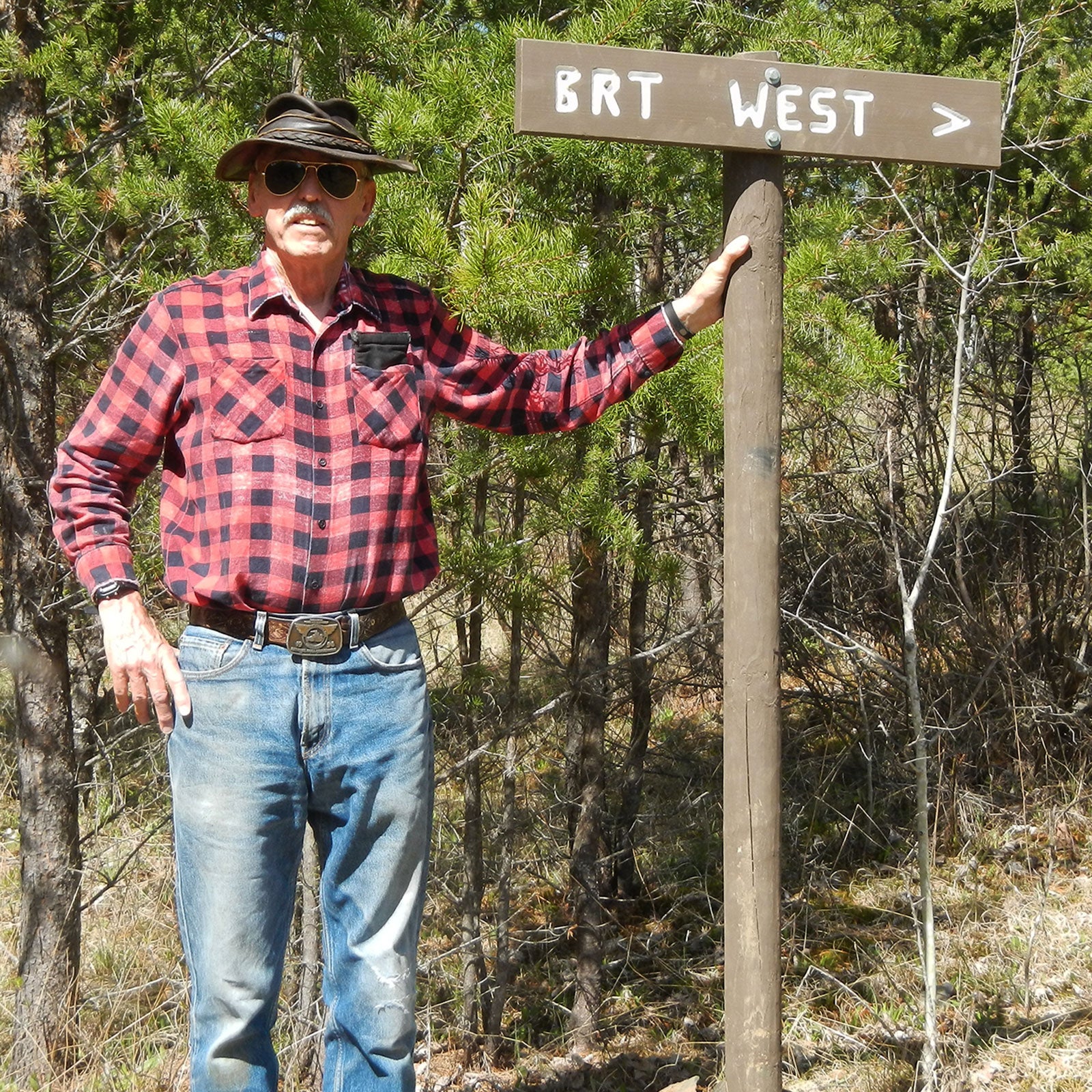John Elliott could tell that the newbie was afraid of the chainsaw. He held it way out in front of his body, so that only the tip of the blade bit into the cedar tree that had toppled across the trail. To make the chain cut into the trunk, the guy was tiring himself out by pushing hard on the saw.
“We get people who come from the Twin Cities and tell me, ‘I’m in great shape. I work out in the gym,’” Elliott tells me later. “But it just blows them up, working on the trail. They’re generally using muscles that they haven’t used before. And they work inefficiently,” explains the 72-year-old, who has headed up trail-clearing efforts along for 40 years. Noobs watch Elliott melt away an 18-inch pine in just ten minutes—on his best day, he dispatched 102 trees in just two hours—and scratch their heads at the older man’s speed.
“I just kill these young kids, and they can’t figure out how,” Elliott chuckles. “But I’ve been cutting in the woods since 1975.”
Elliott doesn’t exactly look like Paul Bunyan: he’s tall and scarecrow gangly and sports a graying moustache. “He’s jovial and open and loves to teach what he knows,” says Jeremy Nordling, the mechanized trail director for the Border Route Trail Association, a volunteer group that maintains the path.
Without Elliot and the volunteers he’s led on biannual trail-clearing missions, the Border Route Trail would cease to exist. The 65-mile path follows the U.S.-Canada border between Minnesota and Ontario. Thirty-five miles of the trail cross the ��(���°䴡��).
The only enduring open spaces in these thick northern woods are the region’s lakes. Everything else quickly becomes a thicket of brush and saplings. Even the elegant, slender poplar trees that proliferate in these forests start their lives as hiker-thwarting shrubs. Every year, blowdowns bury sections of the trail beneath a tangle of pick-up-sticks.
So, like Sisyphus, trail crews arrive every spring and fall to push their proverbial boulder up the hill. Only by having volunteers hack away downed trees and scrub does this trail remain passable to hikers.
The brush is the worst, because instead of sawing away at one trunk, crews have to snip away at thousands of whip-thin branches. “It’s slow work,” Elliott says.
Progress moves faster on the eastern and western ends of the Border Route, where crews can use power tools. Their power brush-cutters roar through tangled undergrowth and fit into backpack harnesses, so crews can easily haul them to a work site. Volunteers also wield compact, 15-pound chainsaws that melt through the region’s soft pines and poplars. “You just rest the saw on the tree and let it ride down, guiding it with your fingertips,” Elliott says. Anything else is wasted effort. “A lot of people make the mistake of moving the saw back and forth, which does nothing.”
But such tools are verboten along the segment of the Border Route that runs through the BWCAW. There, crews have to use a two-person crosscut saw. These two-handled, five-foot blades are remnants of the region’s earliest logging days—and they’re dangerous, Elliott says. “They’re razor-sharp. You hear stories of saws falling on people’s legs and killing them.” (The Border Route Trail Association, however, maintains a spotless safety record.) Crosscut saws are also tricky to use, since operators have to coordinate their movements. “You can’t push it at all, only pull, or it’ll bind up,” Elliott says.
Antiquated tools aren’t the only reason progress is slow through the BWCAW. There’s also its distance from major population centers. Most Border Route volunteers commute from the Twin Cities, some 340 miles away. Journeying to remote sections of the trail requires additional time. Before they can clear the 6.5-mile section of trail between Gogebic Lake and the Pine/West Pike Portage, crews must first paddle seven miles and then hike a mile farther to base camp. So, in a typical weekend, most crews manage to clear only 1.5 to two miles before they have to return home for work on Monday morning.
The U.S. Forest Service also requires that volunteers get certified to use certain tools. The chainsaw certification courses Elliott teaches take a full day, as do the courses on using two-handled saws.
“It’s involved,” Elliott admits. “And it’s hard, tiring work, but I like that. I don’t go backpacking anymore. Now I only hike with a purpose.”


